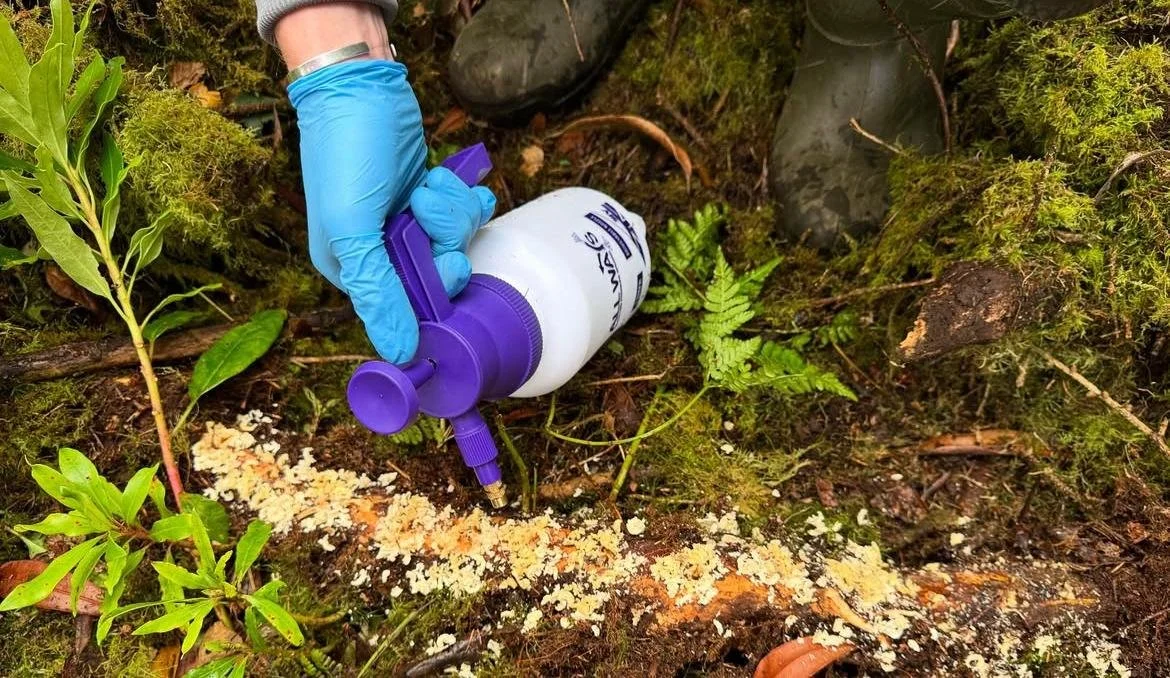Tackling Invasive Species Across North Wales
Invasive Non-Native Species (INNS) are one of the biggest threats to our rivers, wildlife, and native habitats. Plants like Himalayan balsam, Japanese knotweed, and rhododendron spread rapidly, outcompeting native vegetation, destabilising riverbanks, and reducing biodiversity. Their presence can also increases erosion and sediment runoff, affecting water quality and aquatic life.
At North Wales Rivers Trust, we’ve been working to tackle the issue head-on across several of our key catchments, working in collaboration with local partners, contractors, and volunteers.
INNS removal on the Gwyrfai catchment
Across the Clwyd Catchment
We’ve been working alongside the North Wales Wildlife Trust to heat-map terrestrial invasive species across the catchment — building a shared understanding of where problem species are most concentrated. Together, we’ve joined forces on community-led Himalayan balsam bashes, removing plants before they could seed and spread downstream.
On the Gwyrfai
We’ve partnered with contractors to tackle large infestations of rhododendron and Japanese knotweed. Both species can dominate the landscape, choking out native plants and damaging fragile soils. This removal work aims to help restore natural woodland structure, improve water quality, and support the long-term recovery of sensitive habitats.
On the Mawddach and Dysynni
Our teams have been busy mapping Himalayan balsam and identifying other invasive species for targeted removal in the coming year. This early-stage survey work is critical — allowing us to plan safe, effective control and coordinate action across landowners and partners.
Rhododendron- Creates dense thickets that block sunlight, prevent native trees and ground flora from regenerating, and release toxins into the soil that inhibit other plants.
Why It Matters
When invasive plants take over, they change how water moves through the landscape and how native plants and animals survive. By working catchment by catchment, and sharing data with our partners, we’re not just pulling plants — we’re rebuilding the natural balance that keeps our rivers healthy.
“Removing invasives isn’t just about what we take away — it’s about what we allow to return, Native plants, pollinators, and riverbank species all begin to recover once invasives are under control.” Restoration Officer Angharad Powell.
Exploring Organic and Nature-Based Removal Methods
North Wales Rivers Trust CEO Laura Owen Sanderson says, ‘As part of our long-term strategy, we’re exploring organic and low-impact approaches to invasive species management. Chemical treatments are sometimes unavoidable, but we’re actively trialling and researching more sustainable alternatives.’
Future projects may include:
Manual and mechanical removal supported by community volunteer programmes.
Mulching and shading techniques to suppress regrowth without herbicides.
Use of natural barriers and native replanting to outcompete invasive regrowth.
Targeted grazing in suitable areas to control dense infestations.
Hot-foam or steam treatments as chemical-free options for knotweed management.
By testing these methods in real catchment settings, we aim to develop practical, environmentally responsible approaches that can be shared with landowners and community groups across North Wales.
Our INNS work continues year-round, guided by data, partnership, and community action. Together, we’re helping North Wales’ rivers and landscapes thrive again.



